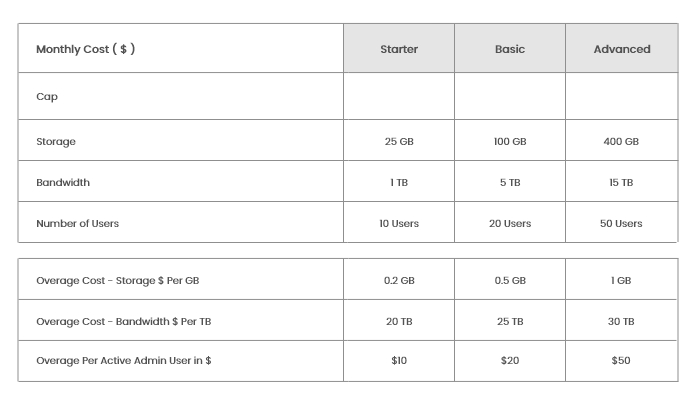



Journalism and social media: How to reach the audience effectively
Journalism and social media become interchangeable terms...
Journalism and social media become interchangeable terms.
Maybe this is so because more than 50% of people get their news from social media.
Platforms like Twitter, on the other hand, are able to report news in real time without any ads or paywalls.
There is no quicker way for journalists to share their tales with the public, whether it be about politics, shopping, entertainment, or anything else.
Consequently, journalists have more freedom than ever before to create their own audiences and break their own stories.
However, using social media as a journalist can be challenging. Knowing how to handle social media is a vital ability for journalists of all kinds and types, from fact-checking to dealing with an environment that is extremely packed with competitors.
The best practices for journalists using social media are broken down below. All of these suggestions are acceptable, regardless of whether you're a freelancer or a representative of a major news organization.
1. Establish a professional profile.
Looking at the part that is so important in journalism and social media.
Ideal users should be able to recognize you as a professional from looking at your profile. To do this, you must pay close attention to even the smallest elements in your social media bios and profile.
We'll concentrate on Twitter since it is the platform of choice for journalists on social media. However, these guidelines also apply to other social media platforms.
A professional headshot is just one of the essential components of a normal journalist's Twitter bio, which also includes the following:
- @Tag the companies you presently (or formerly) work for.
- @Tag any other endeavors or accounts connected to your career (think: podcasts)
- A contact form or email address for people to use to provide tips
- Hashtags that are pertinent to the topic you are covering
These minor particulars can add much-needed credibility to your profile.
Similarly, achieving "blue check" status and being verified on Twitter are popular objectives for journalists using social media. Contrary to popular assumption, you don't need a huge fan base to succeed.
2. Praise your coworkers and other organizations in your industry
A community is represented by journalists. As a result, sharing and reposting other journalists' and organizations' information is crucial to show support.
By the way, when you do so, be sure to @tag them. This makes it easier for you to meet new groups and motivates them to return the favor by reposting your views.
Additionally, be sure to acknowledge any and all organizations where you have been or published. When you're a beginning journalist, exposure of any kind is beneficial.
No social media account, including a journalist's, should be an entire "me, me, me." You can maintain the quality of your feed and develop relationships at the same time by reposting and retweeting other people.
Oh, and don't be afraid to follow publications and other journalists in large numbers. For the purpose of keeping a continual pulse on the news, most journalists on social media follow thousands of accounts, unlike celebrity or brand accounts that may be concerned with their follower-to-followed ratio.
3. When interacting with others, practice morality and mindfulness.
The appeal of social media and journalism is that it allows for quick communication between journalists and the general public as well as other organizations.
Of course, when doing so, you should be considerate and respectful.
If your company doesn't already have a social media code of ethics, you might want to consider creating one. For instance, the New York Times strongly promotes respect and unbiased reporting in its guidelines for journalists.
On social media, name-calling, squabbling, and scandal may all generate excitement and clicks. However, stirring the pot by agitating individuals or writing "hot takes" frequently causes more harm than help.
Although some independent journalists might view drama as a way to gain attention for themselves, doing so could harm your reputation in the long run.
Although there isn't a single "correct" way to conduct oneself, conventional wisdom is that journalists should try to maintain their composure and avoid stirring up trouble just for the sake of it.
4. Check the accuracy of your sources and reports.
Let's address the issue at hand: the widespread mistrust of the media, which frequently results from false information or the fabrication of stories.
This increases the pressure on journalists to report the news honestly and to check their sources before pressing the "publish" button. This is particularly valid if you take advice from users of social media.
There is pressure to report stories as soon as possible, no doubt. But is doing so worth exposing yourself or your company to a horde of criticism?
The lesson here is to independently confirm your sources and avoid accepting advice at face value.
And if you do need to apologize or make a correction, don't become upset. It frequently takes place. Be straightforward and humble, then move on.
People don't have the time or attention span to concentrate on errors, which is one advantage that comes with the news cycle moving so quickly for journalists.
5. To avoid clutter in your followers' feeds, use threads and Stories.
Speaking of how quickly the news changes, journalists are required to update constantly on social media.
Heck, if a journalist is live-tweeting an event, they might post dozens of times each day.
Consider using "threads" to keep all of your postings in one location so you don't overwhelm your followers with posts.
This eliminates information overload in your followers' feeds and also makes tales easier to follow. A typical Twitter thread will end with "Thread:" or "1/(#number of posts)," as shown in the example below.
A similar structure is also used for platforms like Instagram and Facebook Stories. It is quick and simple to provide timely updates using stories without any spam. For journalists who will probably have moved on to covering a new story by the time their old ones expire, the fact that Stories fade after 24 hours is a welcome touch.
6. Post more than just text-based articles and news updates.
There is more to social media and journalism than just posting links to stories.
Your content strategy may benefit from a little originality to help you stand out from the competition. Additionally, doing so enables you to engage the public in ways other than through text-based posts.
Take your audience behind the scenes of your beat, for instance. Slice-of-life writing is essential to developing your personal brand as a writer since it engages readers and makes them feel familiar.
You can mimic network news coverage with just a smartphone using live video platforms like Twitter's own Periscope. Putting together your own live broadcast from start is perhaps simpler than ever, from interviews to on-location reporting.
7. Use hashtags to promote and discover new content
Fact: Hashtag-containing postings reach more people than those without them.
Therefore, adding hashtags to your articles and posts is a subtly astute move to increase the exposure of your tales.
You need to look no further than Twitter's hot tags if you're seeking a potential hashtag to piggyback on. In accordance with your sector or area of coverage, you can view popular tags on a local level or worldwide.
You may generate a lot of buzz for your story if you can join in on a tag early. Although hashtags aren't necessary for every post, they are a low-effort strategy to expand your audience.
8. Do not be frightened to be intimate
Remember that many people in today's society are simply exhausted by the news.
Fact: When it comes to hearing about politics, two-thirds of Americans report being exhausted. People who are seeking any sort of positive news suffer as a result of news articles like those of COVID-19.
Personal tales and stories are a terrific way to break up your coverage, even though journalists have a duty to report such news.
Additionally, personal updates offer a chance to engage fans outside of your journalistic responsibilities. Be aware that few journalists with big audiences are "matter of fact" and rigid. Do you wish to share a private moment or unrelated information? Try it out.
9. Distribute content when your audience is most engaged.
We now know that the news cycle moves quickly. like, insanely quick. Anything you can do to make sure that people read your posts is positive. Knowing when to publish on social media at optimal times is one way to make it happen.
Despite the fact that many writers update frequently throughout the day, scheduling stories and pieces that your audience must read is a wise strategy to enhance interaction.
By the way, you're not required to abide by these rules in real-time. As an alternative, think about using publishing platforms like Sprout Social, which let you queue up your material and target automated posting windows based on when your audience is engaged.
Are you abiding by the standards of journalism and social media?
It's obvious how social media is affecting journalism. Today's journalists have a wide range of social media opportunities and obligations, from breaking news to interacting with the public in real-time.
It can be overwhelming, yes. Keeping up with the latest journalism and social media best practices is crucial for this reason.
Speaking of which, it's crucial for journalists to know how to respond to unfavorable publicity and crises on social media today. If you're a journalist trying to make your way through the chaotic social media landscape of today, with Hocalwire's social media auto-posting feature, any news items, and articles that match the specified rule will automatically post on the selected social media sites. If you're searching for one, schedule a demo of Hocalwire CMS by booking a time.

